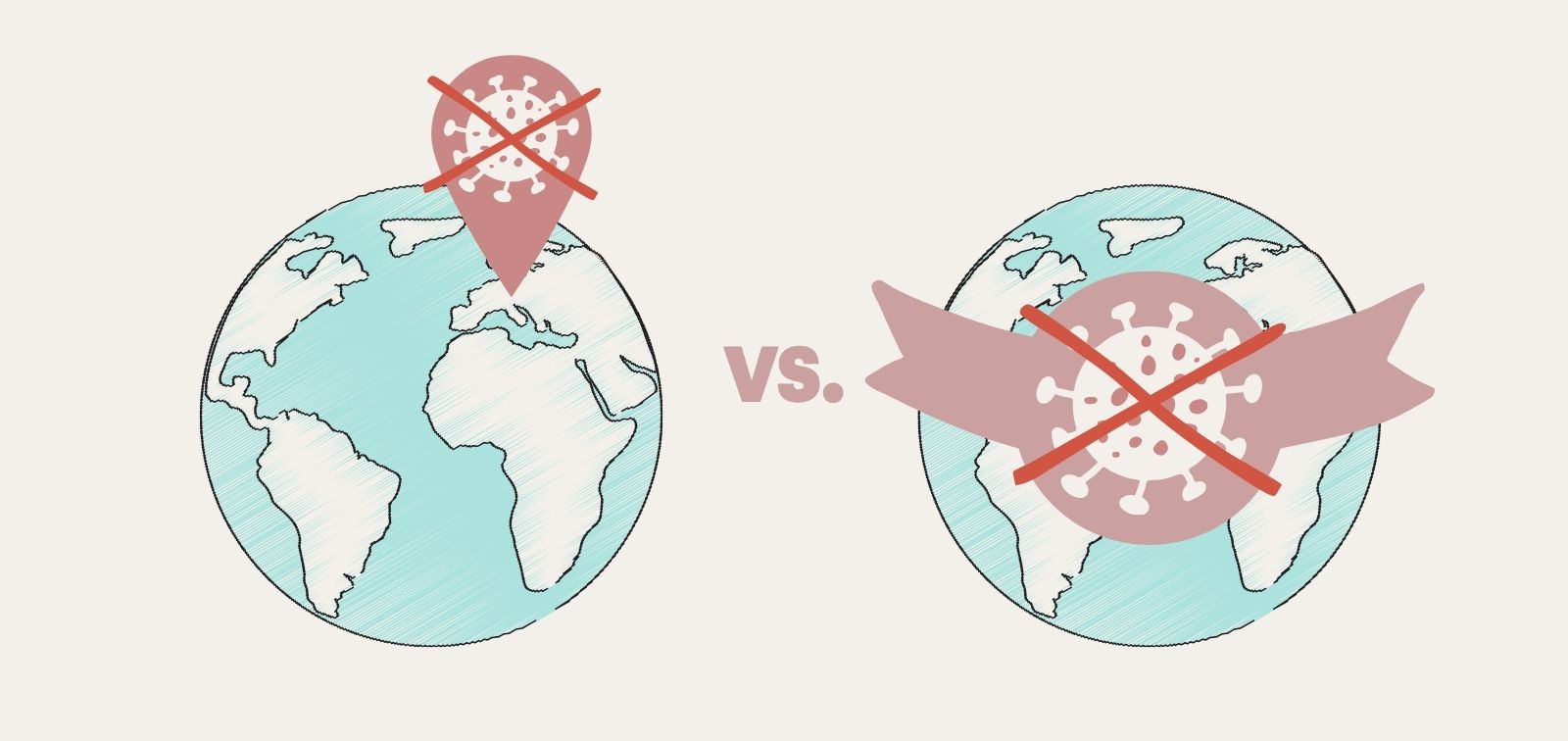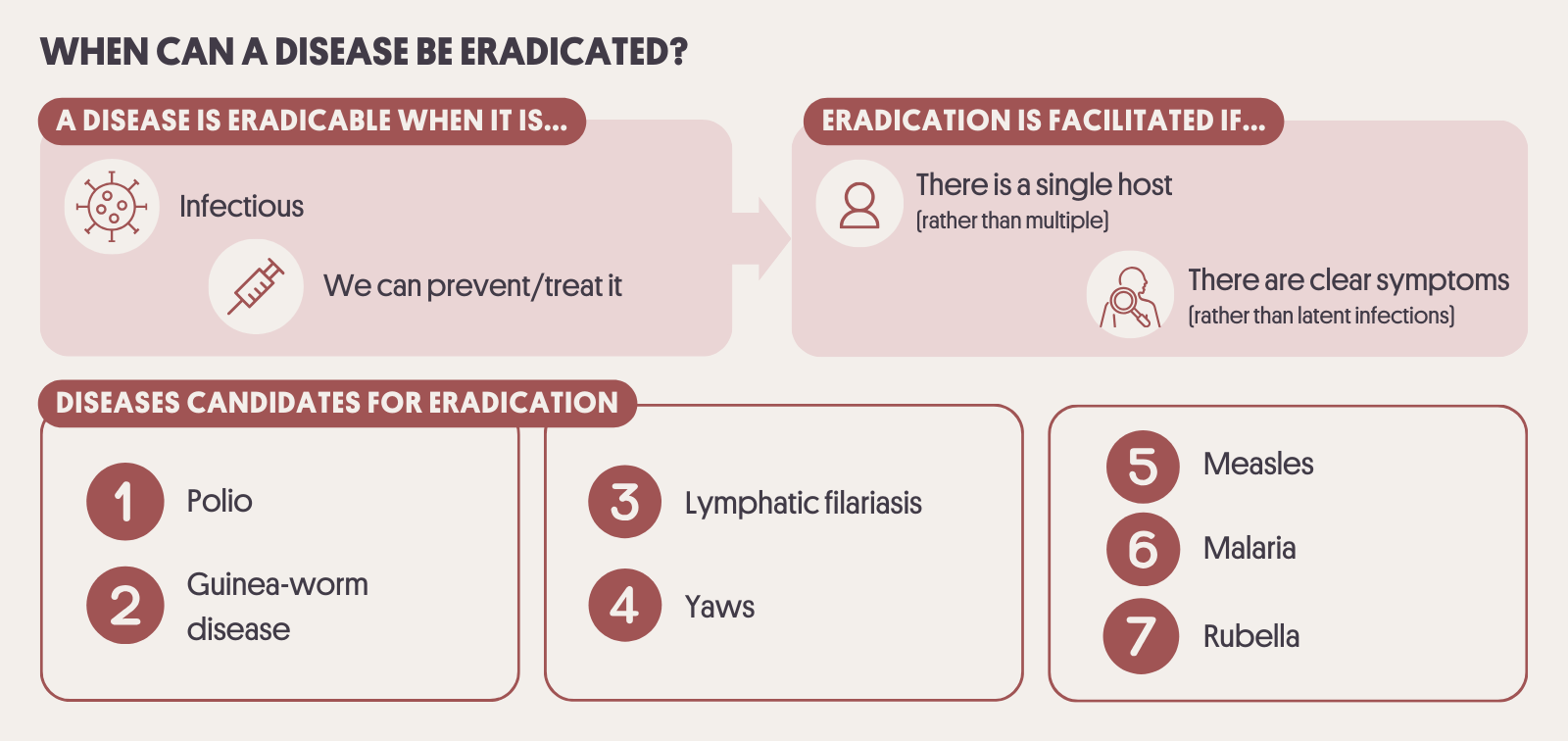Eliminate or Eradicate

What is the difference between eliminating and eradicating a disease?
Although it may not seem like it, there is a huge difference between eliminating a disease and eradicating it.
Eliminating a disease means that the disease is no longer transmitted in a specific region of the world, but still exists elsewhere. For example, malaria was eliminated from Europe in the middle of the last century, but it still exists in many countries in Africa, Asia and Latin America.
It may also be that we have eliminated it from the human population, but the pathogen that causes the disease still circulates in other animal species. For example, SARS was eliminated from the human population after causing an outbreak that spread to several countries in 2003, but the virus continued to circulate in animal reservoirs, such as bats.
By contrast, eradicating a disease means that the pathogen that causes it has been completely eliminated from the planet.
Only two diseases have been eradicated: human smallpox in 1980, following a massive vaccination campaign; and rinderpest in 2011. And there are only two because it is very difficult to eradicate a disease. A global and coordinated effort is required to ensure that vaccines and/or treatments reach every corner of the planet.
The role of vaccination
When a disease is eradicated, it is no longer necessary to continue vaccinating against it. Since smallpox was eliminated in 1980, people born after that year no longer receive the vaccine.
Polio, on the other hand, has not yet been completely eradicated, so all children continue to be vaccinated. Currently, the ‘wild’ polio virus is circulating in only two countries in the world: Afghanistan and Pakistan. However, the most worrying (and unforeseen) challenge to eradication is cases caused by oral vaccine-derived virus (VDPV). In low-income countries, this has been the vaccine of choice because it is easier to administer and helps interrupt virus transmission. However, this vaccine contains an attenuated version of the virus that in some cases can revert to cause disease. This is a problem in communities with low vaccination rates, as it can cause disease.
For this reason, although wild poliovirus is on the verge of eradication, global vaccination remains critical to prevent both the reintroduction of wild poliovirus into other countries and the emergence of vaccine-derived polioviruses.
Eradicating a disease

READ MORE
COLLAPSE
- New Results Point out the Need to Modify the Current Strategy for Yaws Eradication(ISGlobal, 2018)
- Malaria Eradication is Feasible, but Needs Innovation(ISGlobal, 2019)
- Yaws: How to Eradicate a Disease Worldwide(ISGlobal, 2017)
MULTIMEDIA MATERIAL
